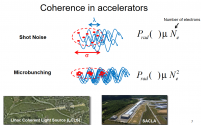China reports robust semiconductor industry growth despite US sanctions
Although some of its key semiconductor industry players were put on the Entity List by the US government since 2019, China managed to register double-digit growth in the revenues of all of its semiconductor sub-sectors in 2020, pushing up global market shares to challenge Taiwan and the US, according to several recent reports.
If the robust growth continues, China's semiconductor industry will grow rapidly in the next decade and by 2030 will become a world champion in semiconductor manufacturing, seizing a 24% global market share, as previously predicted by the Semiconductor Industry Association (SIA).
According to an SIA blog, the semiconductor industry in China grew 30.6% in 2020 to reach $39.8 billion in total sales, representing robust annual growth of 36%, 23%, 32%, and 23% for the fabless, IDM, foundry, and OSAT sectors, respectively.
China registered 9% of the global semiconductor market share in 2020, surpassing that of Taiwan for the second year in a row. It is likely to overtake Japan and Europe soon, as the global market shares of the semiconductor industry in the two major economies both stood at 10%.
China's fabless semiconductor sub-segment ranked third after the US and Taiwan, taking 16% of the global market share, up from 10% in 2015, even though it was subject to tightened chip export control restrictions.
In terms of wafer capacity increase, China accounted for 26% of the worldwide total, according to IC Insights and SIA, while its top 3 outsourced semiconductor assembly and testing (OSAT) companies collectively garnered more than 35% of the global market share.
China has already announced US$26 billion in new planned funding for 28 additional fab construction projects in 2021, mostly focusing on mature processing nodes.
Private sector investors, supported by government subsidies and favorable tax incentives, have poured money into China's semiconductor industry. Some consumer electronics and home appliance OEMs, such as Xiaomi and Alibaba, are designing chips in-house and having them manufactured by local foundry makers such as SMIC or Hua Hong, an effort aligned to Beijing's call to seek IC sovereignty and self-sufficiency.
SIA said nearly 15,000 semiconductor startups were established in 2020 alone, in which many are IC design companies specializing in GPU, EDA, FPGA, AI computing and other high-end chip design. China now has more than 350,000 businesses operating in its semiconductor sector, 80% of which were registered within the last 5 years, and 30% registered within the past 12 months, according to Global Times, quoting data from Chinese online business information provider Tianyancha.
In addition to copious funding provided by China's central government, provincial governments, and municipal governments, startups in China also got financial backing from local companies such as Huawei, which has also aggressively invested in 56 Chinese semiconductor supply chain companies via a "Hubble Technology Investment Fund" to foster its own semicon ecosystem, according to the Wall Street Journal.


